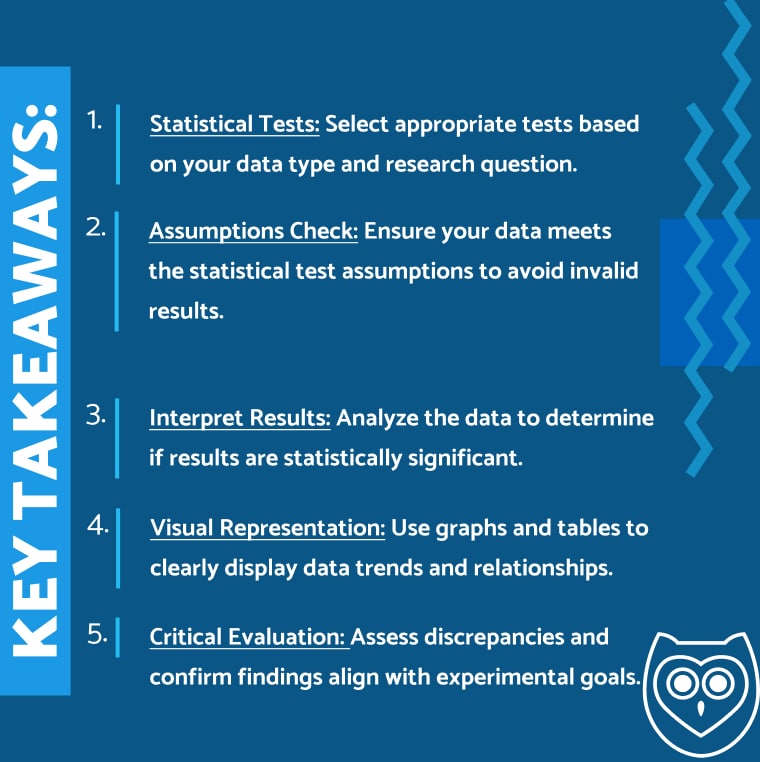How to Write a Lab Report or Research Paper for Biology?
Table of contents
Are you thinking of how to write a lab report for your biology practicals? You’ve come to the right place. To successfully write a biology lab report format for college, you need to pay attention to guidelines. This piece will reveal a detailed guide and clear instructions on how to write a paper in biology.
Before getting started, you need to understand the purpose of this report. When you know what your work is meant for, it’s easier to achieve better goals overall. The main objective of writing a biology lab report template is to analyze the events of the experiment critically. You also have to demonstrate if the goals obtained at the end of the investigation are an indication of success or not. Without any doubt, a student can extract valuable information from their lab recordings. However, you also need to demonstrate a good understanding of the topic in question to interpret your results successfully. If you’re unsure of how to go about this, you can always rush to hire a lab report writing service.
But you can also learn a lot from this piece. Here’s how to write a biology report, let’s take a look.
What Is a Biology Research Paper or Lab Report?
A biology research paper or lab report is a comprehensive document that methodically presents data and analyses from biological experiments. It involves a detailed examination of scientific findings, often encompassing aspects such as hypothesis testing, experimental design, data collection, statistical analysis, and interpretation of results. These reports are crucial in sharing new insights and advancements in the field of biology, contributing to the broader scientific discourse. They typically include an introduction to the research topic, methodology, results, discussion, and a conclusion, along with relevant references.
Scientific research papers whether Biology, Physics, Chemistry, or geography can be structured similarly as they are based on scientific evidence and a thesis. In terms of Biology, there are two main methods that will affect the type of paper you will write. There are Universal and Individual scientific methods.
1. Universal
The following terms are aspects of what makes a universal type of research paper:
- Modeling – a method when a particular perspective of an object is presented then scientists gather evidence based on this.
- Observation – a method where research is conducted through measurement and observation of an object. Data is then verified through repetition and observation multiple times. This will then develop into conclusions.
- Experiment – a method that provides scientific answers to a question by conducting an experiment that provides numerical or observed results.
2. Individual scientific methods
The following terms are aspects of what makes an Individual scientific method paper:
- Genealogical – a method where the genes of people or animals are studied to look through their ancestral path and characteristics.
- Historic – a method that is completed through the establishment of a correlation between facts that have continued to become reality for a set period of time.
- Paleontological – a method of exploring the relationships between ancient organisms found deep in the earth.

Biology Lab Report Format
Before we get started, did you know that a good biology report format is broken down into a specific format and structure? Yes, a good lab recording is split into the following sections:
- Abstract
- Introduction
- Materials and Methods
- Results
- Discussion
- Citation
Now, let’s take a detailed look at how to compile each part correctly.
Abstract
Before you start writing your abstract, you must fill in your biology lab report title page. This page will contain details about yourself and the experiment in question. If your instructor has requested a title page, it should include the following; names of the project participants, class title, present-day date, and the name of the instructor you’re working with. It’s also a great idea to consult with your instructor about the preferred format of the page.
When writing the abstract of your biology lab recording, the aim is to inform the reader about the purpose of your experiment and the conclusions you’re looking to make after it. When writing, you need to note that this part is further broken down into five subsections – the objectives, problems, methods, results, and determination of the experiment. The information here must be written. Often, the abstract is the last part of the lab review to be written.
✏️How should it look like? Here is a short example:
The particular experiment has been carried out in order to define the factors that have a positive effect on the rates of enzyme reactions in cellular activities due to the fact that certain enzymes appear to be more effective than others. The catecholase activity of enzymes has been measured through its rate of absorption in a spectrophotometer, with the use of light that has a 540 nm wavelength. In the course of the experiment, we compared samples with a different concentration of enzymes. The comparison was based on their absorbance rates. The experiment has shown that those samples that had a higher concentration of enzymes, respectively showed a higher percent of absorption rate – the difference is significant, 95% against 24%. This proves that a higher production rate is ensured by a higher concentration of enzymes.
Introduction
The introduction of your biology reports is one of the first sections to appear in a statement. However, it’s recommended that you work on it when you are almost done compiling the review. Yes, write it after you have completed the methodology chapter, result, and conclusion part of the information.
In a biology lab review, this is the part that serves as the framework for the entire text. A properly-written opening chapter is a clear sign that you are familiar with the experiment and the purpose of the research.
In this section, it’s a great idea to note down facts and references. Also, don’t hesitate to use lecture notes to support the points you are building up. Ensure that your introduction is as brief as possible with straight-to-the-point terminology related to the topic. Information about your hypothesis should be explained here, including how you plan to achieve it.
An important point to remember is that you’re not allowed to stretch your opening too much or try to prove a point while writing it. You are only authorized to describe the truth about what you are working on. If you find anything unclear, you may check a sample biology report to find out how they have written their introduction.
✏️Example:
It is a proven fact that enzymes are catalytic proteins whose function is to accelerate reactions by means of lowering activation energy (Campbell, 1996). In the experiment, we studied the rate of reaction between oxygen and catechol and their ability to form benzoquinone in a condition where the concentration of enzymes (catecholase) was different. We supposed that the concentration of enzymes directly influences reaction rates.
Materials and Methods
This chapter is designed to explain how the entire experiment ran. You would need to produce a written description of the materials and procedures you’ve used in your project. A great way to tackle a biology lab review is to compile the materials and methods section first.
However, don’t just go ahead to list out the materials you used for your project blindly. It’s also essential to indicate how they were used during the research.
Your description aims to help another person conduct this experiment in the future. You’re allowed to use tables and figures to describe your procedure. Here, you’re expected to fully explain everything, including measurement procedures, quantities, and techniques. Make sure to state your facts accurately and with caution in this section of your college lab report. Take care not to include too much detail, but they still need to be enough clarity to help a third-party follow your instructions.
✏️Example:
Preparing an extract of catecholase, we used a washed, skinned, and diced potato and we used a scale in order to get precisely 30 grams of potato. We also poured 150 ml of water into a beaker. We added water to the potato, removed the cover of a kitchen blender, and added both ingredients to a blender, we then put the cover back on and pressed the start button, noting the time. Then we pushed the button again to stop the blender. We used four layers of cheesecloth to filter the result, and then we stored the obtained extract in a clean, closed container.
Data Analysis in Biology Lab Reports

Results
The results section of an APA format biology lab report is where you state the result of your experiment clearly. You’re expected to list the details of your development in an orderly fashion – according to how they happened. The facts here may seem like a story you intend to tell another person. But don’t be overly narrative. State only important details and compile them with as few words as possible.
When writing this section, you should include all the tables or figures related to the project you’ve conducted. Also, don’t forget about charts, graphs, and other data illustrations. To further explain the information here, it’s a great idea to include a clear summary of the information in the images you have created.
Before you get started here, take your time to organize all the facts you have gathered from the experiment. However, it’s not time to analyze your end results. Also, avoid describing your methods here. All that’s needed from you in this section is to figure out the trends that follow the end results you have obtained from your work. Note these trends and document them to help your explanation in this section. Do your best to draw the reader’s attention to the patterns of the project.
✏️Example:
|
Experimental group |
Protein concentration (micg/micl) |
Absorbance (595nm) |
|
Media |
2,04 |
0,57 |
|
Media/LPS |
2,16 |
0,60 |
|
Drug |
2,50 |
0,69 |
|
Drug/LPS |
2,22 |
0,61 |
Discussion
When you are done with the results of your experiment, the next thing to work on is your discussions. In simple terms, the discussions section of the lab report summarizes the entire investigation. Yes, you will give a detailed account of all the information about the project here. This section allows you to fully discuss and interpret the news in your research.
Here, you’ll answer questions such as; What did you learn? What were the results of the experiment? Was the hypothesis of your experiment correct or not, and why? Were there any errors? By answering all these questions properly, you will give any reader a clear understanding of what you were trying to achieve from the experiment, the eventual result, and what you have gained from the overall experience. If any changes could be made to improve the outcome of your investigation, you could suggest them here.
An effective way to express your ideas in this part of your biology report is to compare the results and your expected findings. Furthermore, check through the entire process again and note any possible changes that could have been made. In this section, make sure your interpretation is original and not biased to support your hypothesis.
You can create content from a general perspective – neither supporting nor disregarding the hypothesis of your experiment. Don’t forget to add some original ideas and finish up with a concluding statement on the experiment. This is to inform the reader that you’ve reached the concluding part of your study.
✏️Example:
Proteins catalyze reactions by bringing down the activation energy of the reaction; catecholase, an enzyme discovered in potatoes, changes catechol to benzoquinone with the presence of oxygen. We expected that more benzoquinone would be shaped by the presence of a more noteworthy measure of catecholase. This theory was proven by the outcomes acquired.
Catalysts are influenced by the environment – the level of pH present in the environment is one factor that can modify chemicals, while the rate at which the compound shape item is moderated or accelerated depends on how near to the standard the environment is.
Enhancing Your Biology Research Paper: Comprehensive Guidelines
To craft a good lab report that stands out, consider these simplified steps:
- Choose a Topic: Select a topic that interests you and can provide strong scientific data. An engaging and well-supported topic ensures that your research is both interesting and credible.
- Outline Your Paper: Organize your thoughts and research into a clear outline. This should include:
- A straightforward introduction
- Main ideas laid out in a logical order
- A concise conclusion
This approach helps you write a structured and focused paper.
- Use Statistical Tests: Apply statistical tests to analyze your data. These tools are crucial for determining the relevance of your findings. Make sure your data meets the assumptions required for these tests to ensure accurate results.
- Limit Hedge Words: Avoid using words that suggest uncertainty. Stick to clear and precise language to strengthen your arguments and present your research confidently.
- Format Your Paper Properly: Adhere to a recognized scientific format and use credible sources for citations. Proper formatting and citation not only enhance readability but also lend authority to your paper.
Writing a Conclusion
The conclusion sums up the experiment. It clearly states what was learned and why it matters. This part should be direct and brief. If the experiment suggests that more research is needed, the conclusion is a good place to mention this.
✏️Example:
In our experiment, we observed the effects of different sunlight exposures on plant growth. The results show that plants exposed to moderate sunlight grew taller than those in low or excessive sunlight. This finding is important as it highlights the optimal sunlight needed for this type of plant growth. Future studies could explore the effects of different types of light, such as artificial light, on the same plant species.
How To Cite Your Sources
The final key thing to master when learning to write a formal lab report is proper citation techniques. Without a citation section, your work will be considered to be incomplete. Your report needs to comply with the APA biology lab report format. There are different biology lab report citation formats that could be used in college biology lab reports.
However, you’ll be using internal citations here. You can check an old lab report to learn how to cite sources in your study, or you could ask your instructor for the preferable citation technique. Moreover, all references are expected to be a part of the text. These references may include lab manuals, articles, books, etc.
✏️Example:
- In-text – (Author, year);
- Literature Cited page – Author last name and initials, year, the title of an article or chapter, the title of a book, journal, website or another source, editor’s name, publisher, the city where published, pages.

How To Find The Right Title
There may be times when it would be difficult to come up with the right title for your school biology report. So, what do you do when this happens?
The best solution is to write your title to contain essential details about your study. Let it tease the reader on what to expect at the end of the last page. Another great idea is to express it in a form that states whether you agree with or disprove a theory. Also, avoid titles that sound general or fail to address any particular issue. If you’re still finding it difficult to develop the right title, you may ask your instructor for some input.
How To Proofread Your Biology Lab Report
When you write and compile your lab report, check it for any grammar or spelling mistakes. Without any doubt, grammar errors will reduce the quality of your lab report. Some readers may even discredit the authenticity of the lab report if it’s riddled with spelling mistakes.
As soon as you are done checking for spelling errors, the next thing to do is to make sure that you have followed the format and style of your instructor. Proofreading is more than just correcting the grammar in your work. It involves giving it a comprehensive review to spot whatever is wrong. Your references also need to be listed fully. Also, make sure that the title page of your biology lab report complies with acceptable standards. It’s important to ensure that you’ve used a good font with correct margin formatting. Finally, add the page numbers, headings, full name, and additional information to the report.
Often, educational institutions frown against students getting outside help to write their lab reports. It’s important not to plagiarize the work of students and scientists who have worked on a similar topic before you. As a result, you need to properly understand the details of your study, including the style and format that is required. It would help if you kept in mind that the format of your report may vary depending on the requirements of the teacher or your class level. So, before you go ahead to learn or use a new format, ensure you make findings from the teacher. And if you are unsure of how to put the entire report together, it means you need some help.
If you are still having issues creating the report, you can hire a service provider to do it for you. You have to navigate to their website and click on “write my lab report” to get started. When hiring a writing service, you need to exchange some extra cash for quality. A good writing service will include all the essential details in your work and organize them properly. They’ll also help you take care of plagiarism. Your instructor will be pleased with the content of your work.
Biology lab reports require accuracy and precision in reporting data and results. Writing a good lab report requires organization, clear descriptions of the results, and careful analysis of the findings. Papers Owl can help you to structure your biology lab report to ensure accuracy, clarity, and brevity. Our experienced team of writers has compiled some useful tips to help you write an effective and well-structured biology lab report.
Conclusion
Finally, we’ve gotten to the end of this piece. You’ve learned how to write a biology lab report. Learning how to create a school report correctly is a great advantage to any student. You’ll be able to clearly state what you have worked on and observed during a study. For those who plan to make a career in science, this type of writing will become a regular thing for you. If you plan to learn the basics of how to write a lab report, go through the details in this article.







